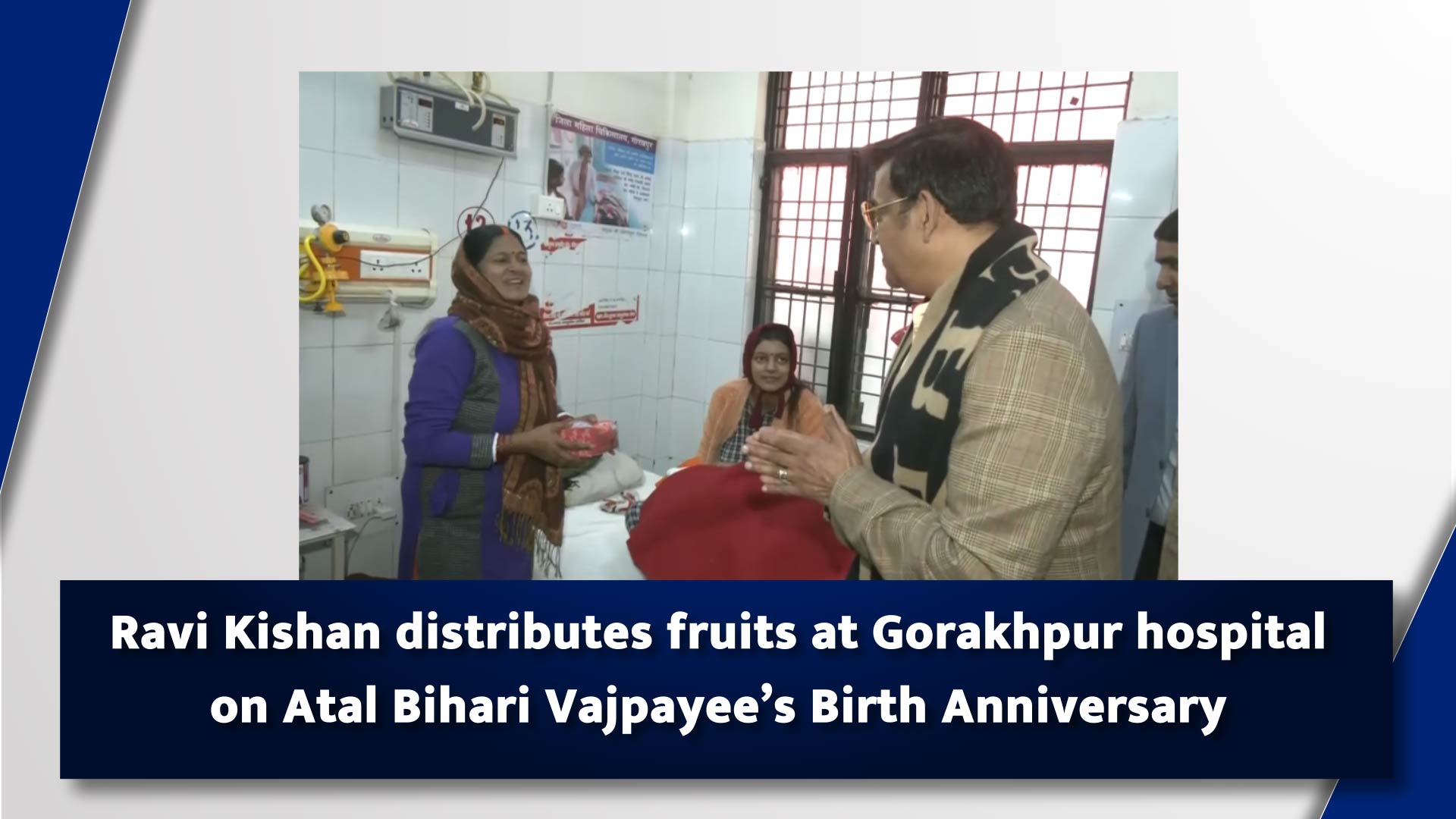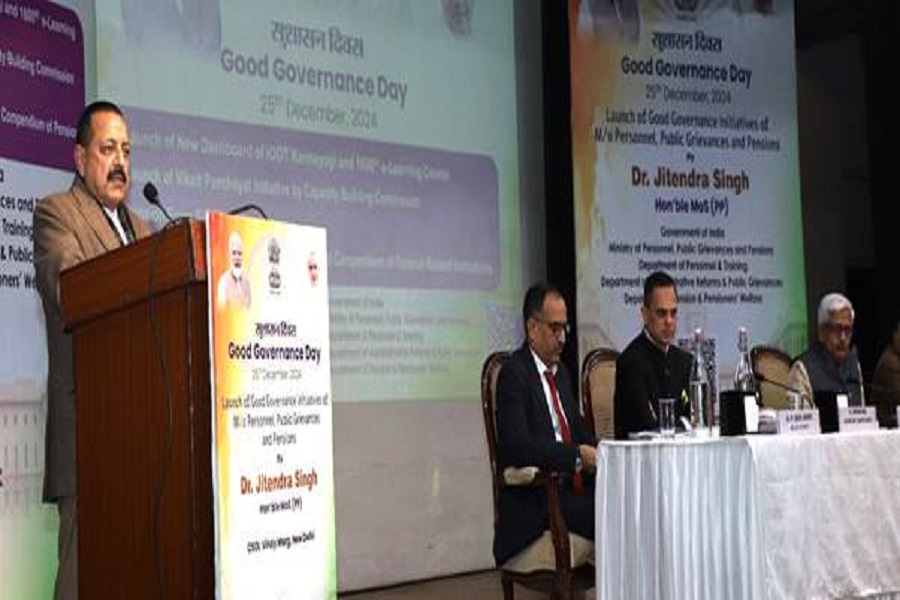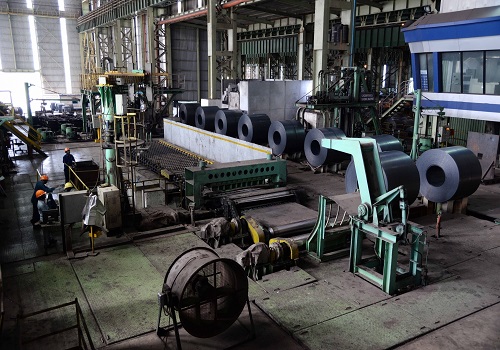Agri Picks Daily Technical Report 07 December 2021 - Geojit Financial

Follow us Now on Telegram ! Get daily 10 - 12 important updates on Business, Finance and Investment. Join our Telegram Channel
SPICES
Spices complex was up on NCDEX on Monday led by Coriander April futures that jumped more than four per cent on fall in arrivals in the spot market. Jeera January futures rose over two per cent. Expectation of lower acreage this season lend support. Turmeric April futures stretched gains and ended more than one per cent up.
Exports of spices from India during Apr-Sep declined 8% on year to 780,273 tn, according to data from the Spices Board India.
Spices Board pegs Apr-Sep jeera exports at 139,295 ton, down 14%.
Spices Board pegs Apr-Sep turmeric exports at 77,245 ton, down 26%.
Spices Board pegs Apr-Sep pepper exports at 10,844 ton, up 24%.
Spices Board pegs Apr-Sep small cardamom exports 4,240 ton, up 101%.
Spices Board pegs Apr-Sep coriander exports at 24,459 ton, down 13%
According to third advanced estimates by the farm department, spices output is seen rising to 10700000 tonnes in 2020-21, up by 5.5 per cent compared to 10140000 produced in 2019-20.
According to the Gujarat State farm dept., jeera has been sown across 171459 ha as of November 29, compared to 3,02,637 ha during the same period last year. Area under coriander is down in the state as well. Coriander is sown across 86,634 ha as of November 29 compared to 93,000 ha during the same period last year.
Jeera production is seen at 856,505 ton in FY 2020-21, down 6.1% on year according to the Spices Board.
India exported 299,000 tn of jeera in 2020-21, up 40% on year according to the Spices Board.
The Spices Board has pegged coriander production at 822,210 tn, up 17.3% on year.
According to Spices Board, Coriander exports from India were up 21% on year at 57,000 ton.
Government sees 2020-21 coriander output at 720000 tons compared to 701000 tons a year ago.
Spices Board sees exports of turmeric up 33% to 183000 tonnes in FY 2020-21 on yoy basis.
Government sees 2020-21 turmeric output at 1.11 million tonnes compared to 1.15 million tons a year ago.
Spices Board pegs FY21 small cardamom export 6,500 ton, up 251% on year.
Output of small cardamom is seen rising by 100% on year to 22520 tons according to the Spices Board.

OILSEED
All commodities in the oilseed complex settled the day in a lower note. Jan Soybean prices soybean prices traded higher in the morning session and after hitting two week high it fell due to profit booking at higher price levels. CPO MCX Dec and Jan NCDEX Refined Soy prices traded higher in the initial sessions and later if slumped on expectation of lower domestic demand on end of festival season.
Farmers have sown mustard across nearly 7.7 mln ha in the country, up 30.3% on year, in the ongoing 2021-22 (Jul-Jun) rabi season as of Friday, according to the farm ministry's data. The government fixed the minimum support price of the crop at 5,050 rupees per 100 kg for the 2022-23 (Apr-Mar) marketing season, as against 4,650 rupees in the previous year.
India's oilmeal exports fell 50.6% on year to 157,467 tn in October, according to data released by The Solvent Extractors' Association of India. In Apr-Oct, overall exports of oilmeal were at 1.43 mln tn, down 11.5% on year. Soymeal exports fell drastically to 14,538 tn in October compared with 120,290 tn in the same period last year because the Indian variant is priced higher in international markets. In October, mustard meal exports fell about 48% on year to 52,875 tn.
India's vegetable oil imports in October fell 16.3% on year to 1.0 mln tn, the Solvent Extractors' Association of India said. India's vegetable oil imports in 2020-21 (Nov-Oct) at 13.5 mln tn is the lowest in the last six years, it said. Edible oil imports were at 1.0 mln tn in October against 1.2 mln tn a year ago, while for Nov-Oct, they decreased marginally to 13.1 mln tn from 13.2 mln tn a year ago. Imports of refined edible oils rose to 686,000 tn in 2020-21 against 421,000 tn last year while crude edible oil imports fell marginally to 12.4 mln tn from 12.8 mln tn last year. As on Nov 1, 565,000 tn of edible oil was at ports, against 558,000 tn from a year ago, while 1.14 mln tn in the pipeline against 1.0 mln tn during same period last year.
India's soymeal exports fell sharply in October to 30,000 tn from 135,000 tn in the same month last year, according to data from The Soybean Processors Association of India. The data showed soymeal production at 479,000 tn, against 758,000 tn a year ago. Farmers, traders, and mills were left with 10.5 mln tn of soybean stock by the end of October. The association said soybean arrivals in markets were at 1.5 mln tn in October, against 1.8 mln tn in the same month last year. A total of 600,000 tn of soybean was crushed in October, compared with 950,000 tn in October 2020, the data showed. The decline is likely because of a drop in arrivals of the oilseed in domestic markets.
The US Department of Agriculture revised its estimate for global soybean production for 2021-22 marginally lower to 384.01 mln tn in its November report, as against 385.14 mln tn estimated in October. The decline in production is attributed to a fall in output in the US and Brazil, two of the largest producers of the oilseed in the world. The report said output in Argentina for 2021-22 has been lowered to 49.5 mln tn in the November report, as against 51.0 mln tn pegged in October, because of a decline in area under the commodity. The global ending stocks of soybean for 2021-22 is also revised downwards in November's report to nearly 103.8 mln tn, as against 104.6 mln tn seen in the October report. The global ending stocks declined because of lower stocks in Argentina and China, it said, adding that a sharp fall in global ending stocks was limited because of higher stocks in the US. The estimate for global oilseed output is left largely unchanged in November's report at 628.03 mln tn, the report said. Also, global soyoil output in November is largely unchanged from October's estimate at 61.7 mln tn. Soybean is crushed to produce soyoil.
The Centre cut basic duty on crude palm oil, crude soybean oil and crude sunflower oil from 2.5% to nil The agri-cess on these oils has been brought down from 20% to 7.5% for crude palm oil and 5% for crude soybean oil and crude sunflower oil, the Finance Ministry said. The basic duty on RBD Palmolein Oil, Refined Soybean and Refined Sunflower Oil has been slashed to 17.5% from the current 32.5%
India's 2020-21 (Jul-Jun) mustard output is seen rising 22.6% on year to 8.95 mln tn, according to a joint survey by the Central Organisation for Oil Industry and Trade and the Mustard Oil Producers' Association.
The government reduced the effective import duty on CRUDE PALM OIL to 8.25% from 24.75%, and the effective import duty on REFINED SOYOIL to 19.25% from 35.75%
The SEBI has asked the NCDEX not to launch new futures contracts of mustard seed till further notice.
India's soybean acreage in the 2021-22 (Jul-Jun) kharif season remained unchanged at 12.2 mln ha, agri ministry.
The base import tax on crude palm oil has been slashed to 2.5% from 10%, while the tax on crude soyoil and crude sunflower oil has been reduced to 2.5% from 7.5%, the government said in a notification late on Friday. The base import tax on refined grades of palm oil, soyoil and sunflower oil cut to 32.5% from 37.5%. After the cuts, crude palm oil, soyoil and sunflower oil imports will be subject to a 24.75% tax in total, including a 2.5% base import duty and other taxes, while refined grades of palm oil, soyoil and sunflower oil would carry a 35.75% tax in total.
The government allowed the import of 1.2 mln tn of genetically-modified soymeal till Oct 31 to augment supply in domestic markets, the Directorate General of Foreign Trade said in a notification.
India is likely to produce around 10 mln tn of mustard in 2020-21 (Jul-Jun), up 35% from a year ago, due to higher acreage and favourable weather conditions, according to the Solvent Extractors' Association of India.
Malaysia's crude palm oil output rose 1.3% on month to a little over 1.7 mln tn in October, data from the Malaysian Palm Oil Board. Export of palm oil in October declined 12% on month to 1.4 mln tn, while outbound shipments of biodiesel declined 63% on month to 19,204 tn, the data showed. Total palm oil stocks in the country increased 4.4% on month to around 1.8 mln tn.
Malaysia's crude palm oil exports in November were at 632,943 tn, against 362,480 tn in October, according to data by private cargo surveyor Amspec Agri.
Acreage under oil palm in north-eastern states is likely to increase by 50-60% by 2025 depending on the availability of seedlings, a farm ministry source said.

COTTON
The International Cotton Advisory Committee has lowered its forecast for global prices for 2021-22 (Aug-Jul) due to a rise in global production and ending stocks estimate, the agency said in a report. The committee revised downward its price forecast for Cotlook A Index, a global benchmark for prices of raw cotton, by 1 cent from the previous month to 103 cents per pound. In 2021-22 season, the committee estimated global ending stocks for the season at 20.5 mln tn, slightly higher than 20.4 mln tn in the previous season. Global consumption is seen almost steady at 25.6 mln tn. The agency sees global export for the season at 10.2 mln tn, as against 10.6 mln tn a year ago. Global production for the ongoing season is estimated at 25.7 mln tn, compared with 24.3 mln tn in the previous season. The rise has largely been attributed to higher production in the US and Brazil. In the US, cotton production is estimated at 3.96 mln tn, against 3.18 mln tn a year ago. Output in India, the largest producer, is expected to be 5.9 mln tn, compared with 6.0 mln tn in the previous year.
The UK-based Cotton Outlook has scaled up its estimate for global production in 2021-22 (Aug-Jul) by 97,000 tn to 26.0 mln tn, the agency said in its November report. The estimate has been revised upward as production in the African Franc zone and Turkey is expected to be higher. The agency has maintained its output estimate in the US at 3.92 mln tn. The outlook for cotton production in India, the largest producer, has been maintained at 6.17 mln tn. The production in China is seen at 5.71 mln tn. The agency maintained its estimate for global consumption in 2021- 22 at 26.15 mln tn. Global cotton ending stocks are estimated at 110,000 tn for the ongoing 2021-22 season.
The Cotton Association of India has maintained its output estimate for the 2021-22 (Oct-Sep) marketing season at 36.0 mln bales (1 bale = 170 kg. The association has estimated cotton production in north India at 5.3 mln bales. In the central zone the output is estimated at 20.4 mln bales and in the southern region, production is pegged at 9.6 mln bales. Of the total crop, around 3.1 mln bales had arrived in markets across India till October. Exports for the ongoing marketing year is pegged at 4.8 mln bales. In the current marketing year, India shipped around 400,000 bales of cotton till October. The Association has also maintained its estimate for domestic cotton consumption at 33.5 mln bales, while imports are seen at around 1.0 mln bales. Ending stock for the season has been estimated at 6.2 mln bales.
India's cotton exports have slowed down in the current marketing year that began on Oct 1 as higher domestic consumption led to a tight supply situation and a rise in local prices, said market experts. In the ongoing marketing year of 2021-22 (Oct-Sep), around 200,000 bales of cotton were exported till October. Most of the consignments were shipped to Bangladesh followed by China and Vietnam, a trade official said. "Forward export deals of 600,000- 700,000 bales of cotton for Nov-Dec delivery are still in transit, these deals were struck at a price of 115-125 cents per pound on a cost-and-freight basis," said Dharmendra Jain, director of Ahmedabad-based D.P. Cotton. Exports may touch around 900,000 bales by December, which is sharply lower than the previous year. In 2020-21, India shipped around 1.2-1.5 mln bales during Oct-Dec, industry experts said.
The US Department of Agriculture marginally raised its estimate for 2021-22 (Aug-Jul) global cotton production to nearly 121.8 mln bales (1 US bale = 218 kg), in November, from 120.3 mln bales projected in October, the agency said in its World Agricultural Supply and Demand Estimates report. The world production forecast is 1.5 mln bales higher as gains for Brazil, Australia, Pakistan, and the United States more than offset a 200,000 bales decline in Greece following unusually heavy October rainfall the release said. The global ending stocks are projected at 86.9 mln bales, 200,000 bales lower than in October. For the US, the agency has slightly raised its output estimates to 18.20 mln bales, compared with 18.0 mln bales projected a month ago. The US ending stocks are 200,000 bales higher at 3.4 mln.
The US Department of Agriculture's Foreign Agricultural Service has marginally scaled down its estimate for cotton output in India in 2021-22 (Aug-Jul) to 28.0 mln bales (1 US bale = 218 kg) from 28.3 mln bales projected a month ago.
The new season for cotton which started on Oct 1, is expected to be good for farmers as the market price of the fibre is currently more than the minimum support price, due to firm demand and a rise in global prices.
Sowing of cotton across the country has ended and farmers have sown the crop across 12 mln ha in the 2021-22 (JulJun) kharif season, down 6% from a year ago, data from the farm ministry.
India's cotton output in the 2021-22 (Oct-Sep) marketing year is seen at 36.2 mln bales (1 bale = 170 kg), as per the median of estimates of 13 prominent players in the cotton value chain polled by Informist.
In the ongoing 2021-22 (Jul-Jun) season, cotton acreage across the country was 11.9 mln ha as on Thursday, down 5.8% from a year ago, data from the farm ministry showed.
In the Union Budget for 2021-22 (Apr-Mar), Finance Minister Nirmala Sitharaman proposed customs duty of 5% on cotton and 10% on cotton waste. She also proposed an Agriculture Infrastructure and Development Cess of 5% on cotton, taking the overall customs duty to 10%. Customs duty on raw silk and silk yarn or yarn spun from silk waste has been increased to 15% from 10% earlier.

OTHERS
Farmers across the country have sown rabi chana across 7.0 million ha as of Wednesday, up 7.4% on year, data from the farm ministry showed. The increase in area under chana is primarily due to higher sowing in the key growing states of Maharashtra, Rajasthan, Madhya Pradesh, and Karnataka. In Madhya Pradesh, the largest grower, chana acreage was up 9.1% on year at 1.8 mln ha, while area in Maharashtra was 24.3% higher at over 1.0 million ha. On the other hand, farmers in Chhattisgarh have sown chana across 65,600 ha so far in the rabi season, down 34.3% from a year ago, followed by farmers in Bihar sowing the pulse across 27,000 ha, down 12.9% from previous year.
Stockists across the country had declared nearly 3.1 mln tn of pulses stock on the official portal of Department of Consumer Affairs as on Sep 20, the government said in a release today. The maintaining of data on stocks of essential commodities is expected to ensure smooth supply at affordable prices, according to the release.
The Securities and Exchange Board of India has asked the National Commodity and Derivatives Exchange to not launch any new chana contracts on its platform till further notice, the market regulator said in a release on August 16. NCDEX has also been directed to not take any new positions for the running contracts, and only squaring up of positions will be allowed on the platform with immediate effect, according to the official release.
Government raises MSP for Rabi crops for season 2022-23. MSP for chana has increased by 2.5 % to Rs. 5230/qtl. against Rs. 5100/qtl previous year.
The clearing arm of the National Commodity and Derivatives Exchange Ltd, the National Commodity Clearing Ltd, said today that spread benefit in initial margin will be provided across futures contracts of guar seed and guar gum. The spread margin benefit for the guar gum and guar seed contracts will be 50% of the initial margin, the clearing corp said in a circular. In case of spread positions, additional margin shall not be levied, according to the circular. Additional margins are imposed on futures contracts in order to check price volatility.
According to the Rajasthan State Agriculture department Kharif 2021-22 first estimate, guar production in the state is expected to be at 1373308 tonnes, a rise of 20.8 per cent compared to 1136888 tonnes a year ago.
According to the Gujarat State Agriculture department Kharif 2021-22 first estimate, guar production in the state is expected to be at 106080 tonnes compared to 85930 tonnes a year ago.
As of 02 September2021, the area under guar stood at 2113.20 thousand hectares compared to 2384.70 thousand hectares sown during the same period last year in the major growing state of Rajasthan, according to the data released by Rajasthan state agriculture department.
According to Gujarat State farm department, area under guar stood at 111700 hectares as of September 13, 2021.
As per a first information report on crop loss filed by the Kerala state farm department, so far, over 7,135 ha under paddy (mainfield), 6,026.9 ha under banana (bunched and non-bunched), 1,468.6 ha under rubber (tapped and untapped), 743.7 under vegetables (with and without pandal), and 496.5 ha under tapioca have been damaged due to landslides and flash floods.
MCX December rubber futures bounced up on Monday, while RSS4 grade rubber continued declining in spot market. Sentiments were mixed with concerns over new variant of Covid-19 weighed on market sentiments amidst lingering worries over production due to unfavorable weather in the major natural rubber growing regions in Kerala.

To Read Complete Report & Disclaimer Click Here
Please refer disclaimer at www.geojit.com
SEBI Registration number is INH200000345
Views express by all participants are for information & academic purpose only. Kindly read disclaimer before referring below views. Click Here For Disclaimer












 320-x-100_uti_gold.jpg" alt="Advertisement">
320-x-100_uti_gold.jpg" alt="Advertisement">












